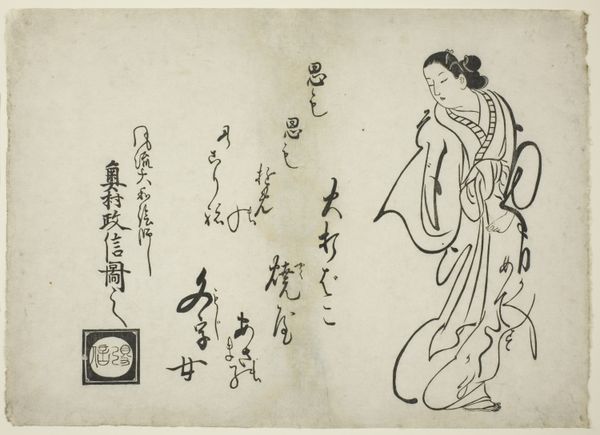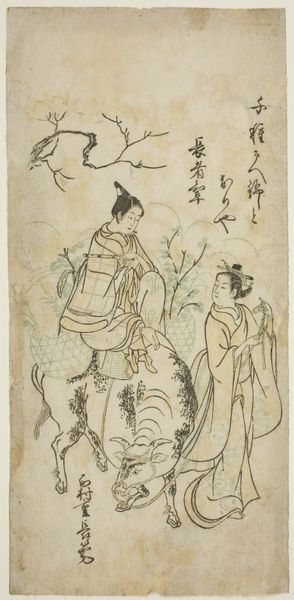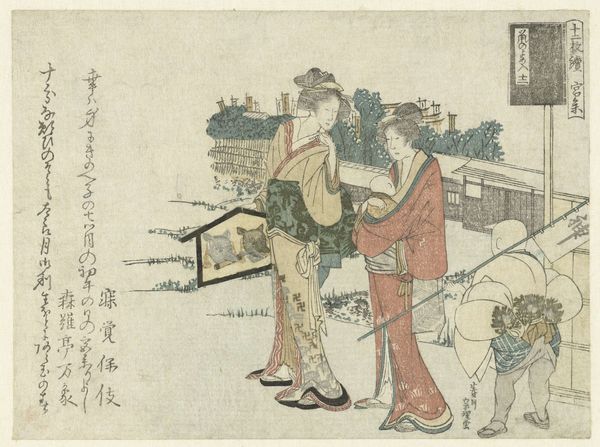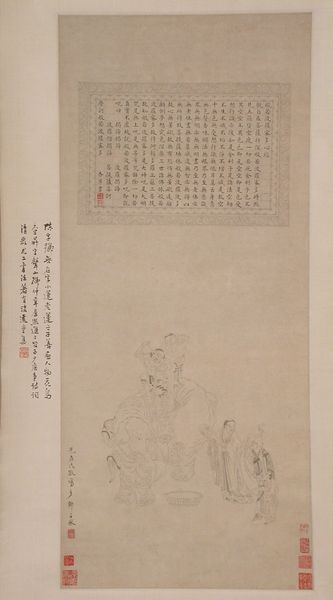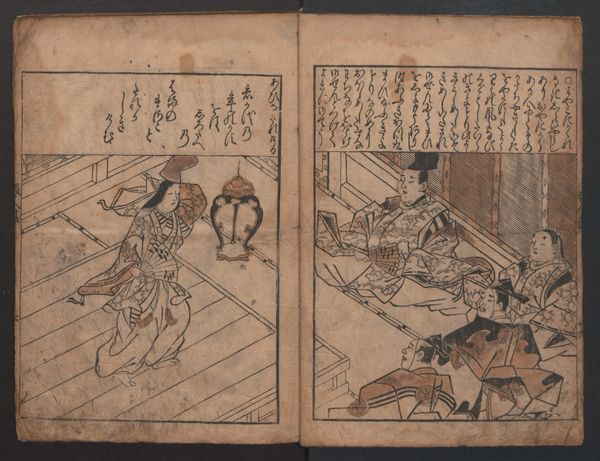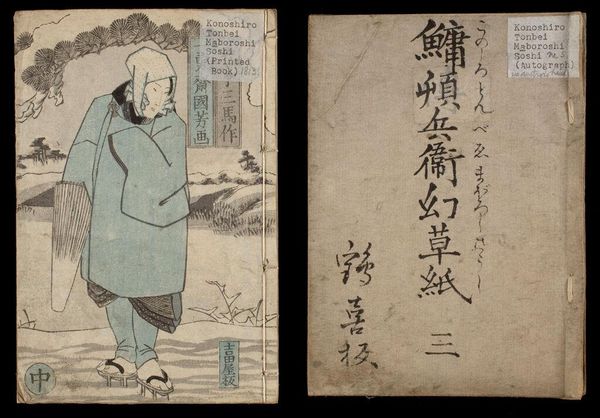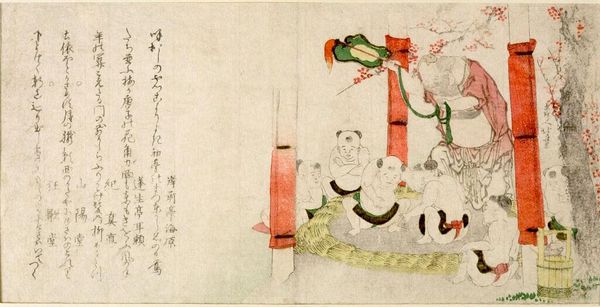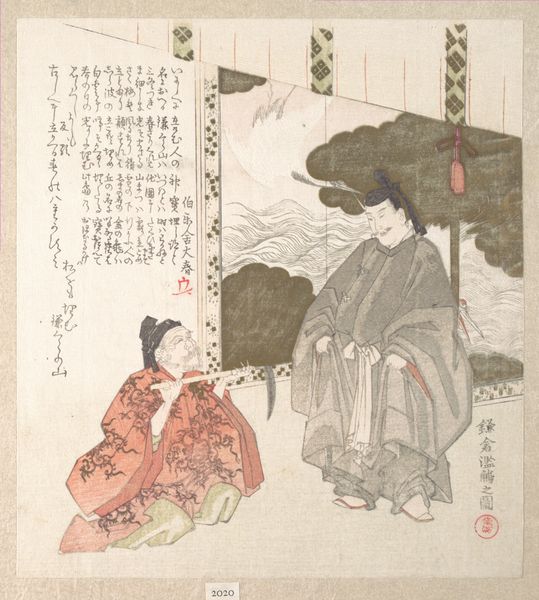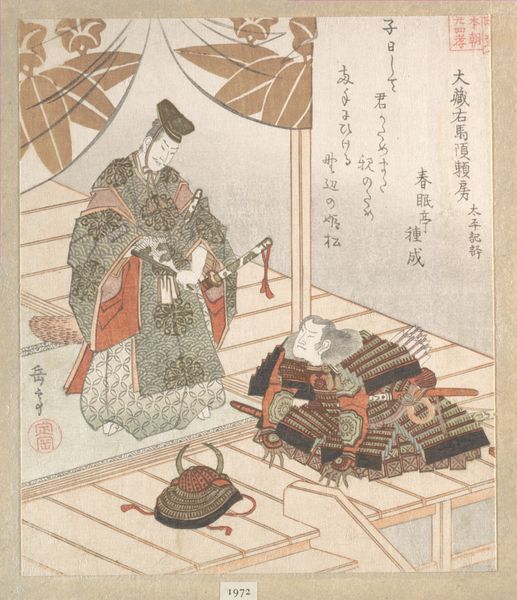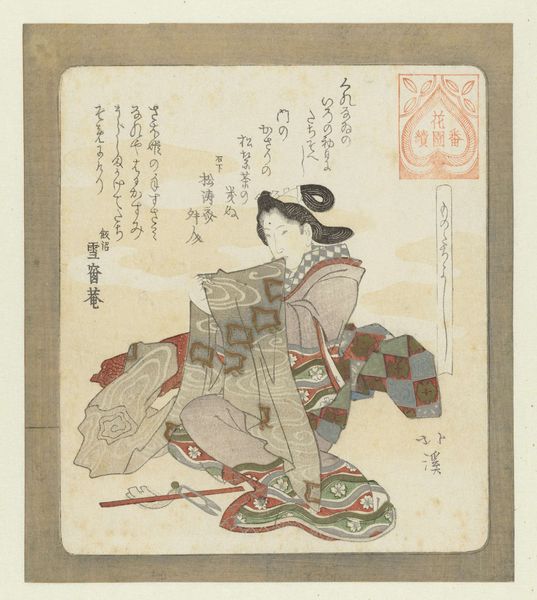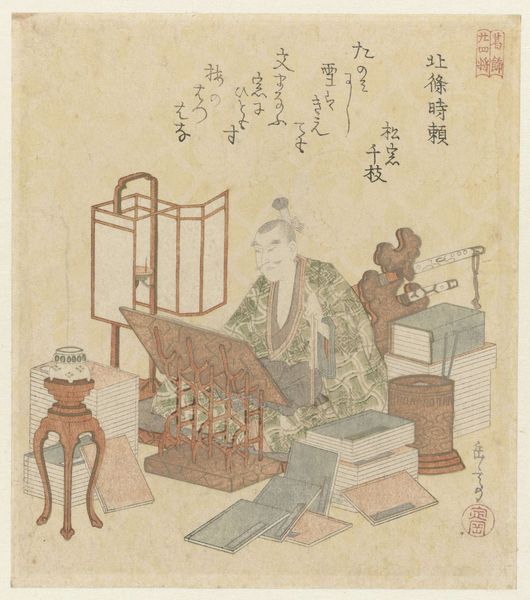
print, ink, woodblock-print
#
portrait
#
narrative-art
# print
#
asian-art
#
ukiyo-e
#
ink
#
woodblock-print
#
calligraphy
Dimensions: 8 15/16 x 11 in. (22.7 x 27.9 cm) (sheet)
Copyright: Public Domain
Curator: Upon first encountering this artwork, I'm immediately struck by the seemingly paradoxical tension between meticulous detail and whimsical looseness. Editor: Indeed. We are looking at the “Cover” designed by Katsushika Hokusai, likely circa 1816. This print, currently housed at the Minneapolis Institute of Art, uses ink and woodblock to create what many scholars categorize within the Ukiyo-e tradition. Curator: Knowing it's a woodblock print adds a layer of understanding to its graphic quality. It makes me consider who the intended audience might have been and the stories they would've brought to the work. Considering the social dynamics of 19th century Japan, were these widely accessible images, or were they meant for a more exclusive, literate audience? Editor: Structurally, I notice the strong division of the picture plane. We have a portrait of what appears to be a scholar or dignitary on one side, counterposed to the layered shapes and calligraphic elements on the other, the ink's tonality creating an intriguing interplay. The composition pulls you in; you almost want to "read" it as much as "see" it. Curator: The man, surrounded by stacks of what appear to be documents, prompts a host of questions about literacy and social stratification during this period, and perhaps even a veiled critique of the elite class that possessed access to such knowledge and materials. Were they being scrutinized, immortalized, and in some way, held accountable within the narrative conveyed? Editor: Perhaps the stark juxtaposition invites that kind of analysis. Semiotically, consider that the clouds, the architectural structure with embedded animal-like forms, and the stylized writing could serve as a language, a key that invites decoding of its artistic purpose. I find myself caught between a sense of grounding realism, stemming from the subject of the portrait, and the ornamental surrealism conjured by the abstract side. Curator: Examining this artwork reminds us that these visual objects were—and continue to be—active participants in social discourse. They function not as passive reflections but as agents shaping the cultural narrative surrounding power, identity, and societal structures of their period. Editor: It's a dance between observation and the possibility of different realities, as told through lines, forms, and carefully balanced composition. I walked in seeing distinct images, and I leave thinking that it is a harmonized depiction that defies simple or instant classification.
Comments
No comments
Be the first to comment and join the conversation on the ultimate creative platform.
